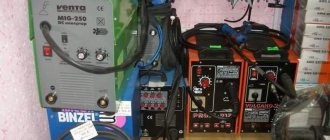In the absence of adequate heating during the off-season period in autumn and spring, or when the standard heating system cannot cope with its responsibilities, we all have to resort to additional portable heating devices.
At the same time, if earlier the choice was clearly in favor of oil radiators or small fan heaters, due to the lack of other safe alternatives, then recently convectors have become increasingly popular.
Now that there are options, many people begin to wonder before going to the store, which of these heaters is really the best? Is it worth spending money on a not-so-cheap convector or is it better to buy an old, time-tested oil pan?
Let's understand all the disadvantages and advantages of both devices.
Oil battery
This is perhaps the most classic type of heater. It works on the principle of heat transfer.
In this case, significant heat loss may occur.
After all, it first contains:
- heating element heats up inside
- then it heats up the oil
- only after this do the battery walls heat up
- and at the end, they transfer heat to the nearest space near the oil pan
Therefore, in order to warm up the entire room faster, it is initially placed almost in the center of the room. If you push it into a corner or lean it against the wall, you will wait a very long time for heat.
Moreover, the minimum distances from walls and from surrounding objects are usually regulated by the safety rules for placing such batteries.
If there is no air movement in the room, then until the heated volume of air space near the heater itself passes to the neighboring layers, and they, in turn, give off heat further along the chain, a very, very long time passes.
Of course, if you are sitting near the radiator itself, you will be hot. But as soon as you move to a sofa or chair, away from the radiator, the feeling of warmth suddenly disappears.
As a result, it turns out that a comfortable and uniform temperature in a relatively large room (living room, bedroom) cannot be achieved using an oil radiator.
Moreover, the bulk of the cold air flow is always located below. And the warm air from the radiator immediately rises, without in any way warming up the layer near the floor.
Therefore, even if you have such a heater in the room, you still have to constantly wear slippers.
The built-in mechanical thermostat is responsible for the question of the frequency of switching on and off oil batteries. Without such devices, it is generally not recommended to buy this type of heater.
So, due to the fact that the air near the battery itself is constantly warmed up much more than in the entire room, its operation error of 3 degrees is considered almost the norm. Although sometimes it reaches 5-7C.
What problem does this pose for you personally? And the trouble here is that the oil engine simply does not have time to adequately respond to the rate of change in temperature outside.
As a result, you experience constant discomfort. The room will either be very overheated, or it will be periodically cool, even with the battery constantly on.
And the point here is not the heat loss of the room, windows or walls. Namely, the incorrect operation of the heating device.
The operating principle of both types of heaters
An oil heater is a container filled with mineral oil.
It comes into contact with a hot electric heating element and receives thermal energy from it. As the oil heats up, it begins to transfer heat to the outer shell of the device. The air in the room is already heated by this shell. An oil-fired appliance can heat a room of 10 square meters in about an hour; it requires connection to an electrical network. Moreover, the more “fins” a model has, the higher the heat transfer area, but also the lower the temperature of the case. Convectors work differently: they pass cold air through a heated spiral, and the flow moves from bottom to top. This is hot air, it warms the room. Thanks to the features of the technology, it is visually very easy to determine that it is a convector in front of you: on top of such a device there will be a grille from which a flow of warm air will flow. Convector heaters heat rooms more slowly than oil heaters, but they are more energy efficient. Therefore, they are loved by owners of private houses, dachas, apartments with panoramic glazing or a winter garden.
Electric convector
This unit operates on the principle of convection. That is, it gradually mixes layers of cold air in the room with hot ones. And all this happens without any fan.
The design of such heaters has a narrowed lower part and a wide upper part.
The heating element is located at the bottom. Moreover, there is nothing else inside the convector.
The air temperature in the “air pocket” of this battery before switching on is the same as in the entire room. But as soon as you plug it into a power outlet, in literally 1-2 minutes the heating element reaches its maximum temperature and warms up a “portion” of air inside the case.
According to the laws of physics, this heat rises upward, where it encounters built-in grilles or blinds on its way.
Colliding with them, warm air is redirected at a certain angle towards the floor, where it immediately mixes with the coldest layer in the entire room.
Moreover, please note that the shape of the air distribution louvers can have a significant impact on the entire operation of the device. For example, in those devices where the blinds are similar to the wings of butterflies, the air will always be hot both from above the convector and from below.
But in models with a fine mesh, the body at the top is usually very hot, and at the bottom it will be just warm.
Thus, in some models, the heated stream of air does not immediately rise to the ceiling, but is constantly mixed with cold streams, creating approximately the same temperature throughout the room.
In general, remember that the uniformity of heating of the room does not depend on the type of heater, but on the intensity of air mixing in it.
Moreover, convectors are produced that can not only mix warm and cold air, but also purify it. The presence of all kinds of filters helps in this - anti-dust, carbon, biologically active with vitamin C, etc.
But since these are consumables, sooner or later they have to be replaced. Imagine that in the future such filters will be discontinued? What will you do?
Therefore, you shouldn’t bother too much here, and it’s easier and cheaper to choose models without fancy cleaners, ionizers, sterilizers, etc.
The best of the best
Oil heaters: choosing the best
Sometimes it is necessary to heat a very small area, for example, a children's room or a bedroom in the country. The Electrolux EOH/M-9157 radiator may be suitable for this purpose . Quite compact and very elegant for such a mundane device, this heater has earned positive reviews from customers on Yandex.Market.
Although the heating area declared by the manufacturer is 20 square meters. m, in fact, the heater will not be able to do this effectively, since its power is only 1500 W. But it will easily warm a small room - no more than 12-15 meters in area. The disadvantages of this model include a short cord - only 1.5 meters, as well as unreliable fastening of the cord compartment cover.
For a larger room, for example, for a living room, you can use Timberk TOR 21.2211 SLX or a slightly less powerful UNIT UOR-993 . Both of these models are designed for rooms from 20 square meters. m, but if the first model seems a little rustic and is equipped with mechanical controls, then the second one, with its rounded shapes and lighting, resembles a spaceship. In addition, there is an electronic display, remote control, delayed start and ECO mode, that is, this model is not only reliable, but also quite modern. All this, of course, is reflected in the price: the difference is almost 3,000 rubles.
Temperature control and power consumption
Convectors, like oil batteries, have their own mechanical thermostat. However, its error due to the correct mixing of cold and warm flows near the heater itself is minimal and amounts to less than 1 degree.
Due to more accurate operation of the thermostat, the continuous operation time of the convector is also adjusted. This results in greater energy efficiency and lower power consumption.
At the same time, the air in the room warms up more evenly. You won’t have too much of a temperature difference in different corners, even if you don’t place it in the middle of the room, but hang it close to some wall.
If you don’t really trust all these stories about efficiency, just compare the energy efficiency or energy saving class of oil heaters and convectors. On stamps from leading brands, it is usually indicated.
So, even the best oil coolers have the worst class - D. And for convectors, it is usually no lower - A. There are some models with the highest class - A+++.
In some European countries, it is even officially prohibited to sell and plug in such electrical appliances with an energy efficiency class below A.
Comparative table of technical characteristics of oil and covector heaters
| Options | Oil heater | Convector heater |
| Economical | - Low economical. | + Approximately 25% more economical. |
| Heating time | +- Conventional models take a long time to heat up, but those equipped with fans heat up quickly. | — Heats the room for a long time. |
| Comfort to use | - Average. | + Both floor and wall models are more convenient. |
| Safety | — High surface temperature (but there are models with a protective casing); If the operating rules are violated, there is a risk of explosion. | + The surface of the convector is not subjected to strong heating; can be left unattended. |
| Life time | - Average | + Large |
| Environmental friendliness | — Raises dust particles due to convection | — Raises dust particles due to convection |
And based on the totality of all of the above, we can clearly conclude that it is best to purchase a convector. Lightweight, compact, silent and safe, these heating devices are gradually replacing heavy, short-lived devices filled with hot oil from apartments and offices. So we can say that oil heaters have almost become a thing of the past in the matter of heating rooms.
The only thing is that models of oil heaters equipped with fans are able to heat the room somewhat faster, but the process of heating its surface itself remains long. See below for detailed materials on choosing these heaters.
Convector safety and maximum heating
Another advantage is the heating temperature of the walls. The body of the convector itself never heats up to such temperatures as oil radiators.
You don’t have to constantly monitor and worry about your children so that they don’t accidentally get burned.
Well, if the thermostat accidentally breaks down in the oil pan, this can lead to overheating of its walls and the formation of microcracks. If these cracks are in the upper part, then the oil will gradually begin to evaporate in the room. And you will breathe all this every day.
If the crack is from below, then the liquid will gradually flow out of the device. And even then, this type of breakdown can be considered a happy accident.
When no such crack has formed, the battery simply bursts due to internal pressure, and boiling oil begins to gushing out in all directions.
Of course, branded oil radiators (Electrolux, Zanussi, Ballu) use non-flammable synthetic oil. But this will not make it any easier for you.
With convectors you are freed from such problems once and for all. The maximum that can happen is that the heater will consume more energy than usual.
What is the difference between a convector and an oil heater?
Oil and convection heaters are essentially different technical devices. Their work is aimed at achieving the same goal - warming the air, but they work on different principles.
An oil heater is an electric radiator whose coolant is mineral oil. The surface of the device is heated to a temperature of 80 to 110 ºC. There are two main types of oil heaters - panel and sectional. In the first, the oil is located in a flat reservoir, and the second type is characterized by the presence of several sections in the radiator.
A convector is a device that heats a room by air convection. Its main advantage is safety.
Comment! During operation, the body does not heat up much, and touching it does not leave burns on the body.
Convector control units - which one is better
And for greater efficiency, convectors can be equipped with:
- electronic control unit
With it, the heater becomes up to 40% more economical than an oil heater.
- or inverter
Cost efficiency reaches 70%. For greater clarity, imagine a car driving uniformly along a highway at the same speed. This is an inverter.
Without it, the heater will resemble a car moving through traffic jams in the city. Who do you think will have more fuel consumption for the same mileage? It's the same with convectors.
The point of inverter units is that the heater “understands” what the general temperature is in the room. Correlates it with the specified parameters and, based on these data, regulates the power of the work.
That is, the device does not operate at maximum power all the time, as is the case with the classic mechanical version. Here, heating first occurs to a given temperature, and then to maintain it, the maximum power is not used at all.
This is precisely what inverter technology is all about, due to which the efficiency of such models is achieved.
Here's supporting documentation and real-world test data for all of the above claims. All with signatures, seals, etc.
Convector tests and conclusion
With such units, you can regulate the temperature in the room with an accuracy of tenths of a degree.
Another advantage of convectors is the versatility of their placement. Most of them have wheels for moving around different rooms of the apartment.
So is the stationary type of fastening. With its help, the convector is placed on any wall in the form of a battery.
However, be careful about one thing. Some people attach foil or other shiny reflective material to the wall behind the heater body. This should supposedly help reflect heat and improve heating.
However, if your model has a temperature sensor at the top, then this foil will cause it to overheat. Accordingly, the convector will not work correctly and will not heat the room a little.
For devices with a bottom-mounted sensor, such a reflective surface has little effect on its operation.
But no one hangs oil batteries on the wall at all. In the summer, they constantly get in the way, or take up extra space on the balcony or in the closet.
So it turns out that if you place it in the same conditions - the same room area, the same initial temperature, the same operating time, two heating devices, then the convector will ultimately outperform the oil battery in all respects.
Here are real reviews from users who switched to fully heating their homes with convectors.
Operating principle, advantages and disadvantages
Most often, electric convectors or oil heaters are purchased to heat rooms. The principle of their operation is based on the fast and efficient heating of air, the movement of which in each of these devices occurs in its own way. In addition, there is a noticeable difference in cost, fundamental design, power, overall dimensions and other characteristics.
In order to answer the question of which is better - a convector or an oil heater, it is necessary to consider the features of their technical design, as well as operational advantages and disadvantages. At the same time, we will compare modern designs, and not those models that were developed by Soviet and Chinese industry and were widely offered for sale 10 years ago.
What is better to choose and in what case?
The advantages of an electric convector are obvious and justified, but an oil radiator is more suitable for office rooms.
When else to choose an oil pan:
- with a limited budget and the need for uniform heating;
- for garages to prevent the formation of excess dust;
- into an apartment or house as a device for additional heating, but provided that central heating is constantly running in the room.
In other cases, it is better to purchase an electric convector.
Popular models and prices
One of the most popular convector models is GALAXY GL8227. It has a mechanical thermostat, and therefore it is inexpensive: 2,490 rubles. The heater operates from a conventional two-phase network and has a power of 1.7 kW - enough to heat a spacious room. The equipment weighs about 5 kg.
Another popular convector on the market is KM-15. It costs only 2,290 rubles with a power of 1.6 kW. Its thermostat is mechanical, it does not have the precision of electronic equipment, but it is sufficient for simple and comfortable heating adjustment. The model weighs 4.7 kg. It comes with legs for easy installation on the floor; in addition, you can mount a towel dryer and a humidifier.
Among simple electric heaters, PET-4-2 is popular. It costs 1,196 rubles for 2 kW. The device weighs 5 kg. This convector consists of two heating elements in a rigid, reliable casing. It is suitable for heating not only residential premises, but also industrial areas, cottages, greenhouses, greenhouses. You can also use it for drying lumber.
An analogue of the previous device is PET-4-1.5. The power of this convector is 1.5 kW, and it weighs only 2.8 kg. At the same time, it has a pleasant price from 790 to 930 rubles. It is one powerful heating element in a steel casing. Suitable for residential and industrial premises up to 50 square meters. It can also be used in capital construction.
Now let's look at popular models of oil heaters. AC Electric Force AOH/M-1507 costs 2,390 rubles. The radiator power is up to 1.5 kW, it weighs almost 8 kg. The model consists of 7 sections; a thermostat is located in front, allowing you to regulate the heating. The radiator provides protection against freezing and overheating.
Another popular model on the market is Ballu BOH/CL-07WRN 1500. This radiator also offers a power of no more than 1.5 kW, but it weighs only 6 kg. The cost of the model is 2,490 rubles. The radiator is designed for rooms up to 21 square meters. It consists of 7 sections, has a thermostat and protection against overheating and freezing.
Greater power is provided by the OASIS BB-20T for 2,890 rubles. It offers 2.4 kW, and therefore can heat a large room. The radiator weighs 8.6 kg. Among the advantages of the model are attractive design and high efficiency. It has 9 sections, so the radiator can be installed not only in residential but also in utility rooms.
Finally, Russians often buy the OASIS BB-25T. This oil radiator costs 3,090 rubles, but it has a power of 2.9 kW, and therefore can be installed in a room with a high ceiling. The maximum heating area is 30 square meters. The equipment weighs 10.1 kg and is connected to a conventional two-phase network. Among the advantages of the model are light indication, mechanical thermostat, built-in fan. However, the equipment operates silently, and support wheels are provided for easy installation. Turning on the fan increases the heating power.
Comparison of characteristics
To buy a really cool heater, you need to compare its technical and operational characteristics with alternative offers. In our case, we will compare the oil tank and the convector according to the following criteria:
- cost is the most important indicator. The incomes of most Russians are such that they first of all pay attention to the difference in price;
- durability is an important indicator, but often ignored due to the low cost of the device you like. After all, a heater is needed here and now, but there is no money for an expensive but durable purchase;
- coefficient of performance (efficiency) - according to an established tradition, consumers are always looking for information on how efficiently heating devices use electricity. Nobody wants to overpay for its consumption. Manufacturers also support this interest, describing how economically their product works;
- room heating rate. The criterion for a residential building and apartment is of little significance: it has basic heating. But for a dacha or garage - the most important;
- ease of use. When buying any electrical appliance, you always want one thing: plug it in and forget about its existence;
- design - there is only one desire: for the newly acquired item to fit well into the interior. Therefore, consumers sometimes spend a long time selecting a heater based on design, ignoring other characteristics or relegating them to the background;
- safety. No less important indicator. Particular attention should be paid to it with small children in the family;
- availability of additional functions. Little attention is paid to this criterion, but in vain.
Which is cheaper?
The range of prices for “oil tank” and convector is enormous. For example, an oil radiator with a power of 0.5 kW can be purchased for 1,699 rubles. And next to it is three times more powerful for almost the same price - 1990 rubles. The same situation applies to convectors. But in general, oil pans are about 30-40% cheaper.
Conclusion: you will have to pay a lot of money for a convector.
What will last longer
The best indication of actual service life is the warranty period. After all, they are always 2-3 times less than the actual operating time. Let's compare:
- oil battery - warranty period 1-2 years, actual service life from 5 to 7 years. True, there are also long-livers: with several replacements, the heating element lasts more than 15 years and does not go to landfill;
- convector - warranty period is 5-10 years, actual service life is 15-20 years.
Conclusion: in terms of durability, the convector is the leader by a wide margin - there is simply nothing to break, and a burnt-out heating element can be replaced.
What is more effective
There is a myth circulating among sellers and specialists that the convector is economical. Its electricity consumption is approximately 25% lower. If you carefully read school textbooks on physics, you will find out, and scientific publications confirm, that for all heating elements, without exception, the efficiency of electricity use is in the region of 98-99% (losses are attributed to the resistance of indoor wiring). Our devices are no exception.
To be fair, we note that the myth was not born out of nowhere: prolonged heating of the oil and housing was considered a loss of electricity. But they did not take into account that after switching off, the accumulated heat is given back for a long time, while the convector cools down almost immediately.
But there are other factors when assessing effectiveness that are not considered at all. One of them concerns the installation location of the heater: the higher it is, the lower the output: the ceiling is heated. And this directly applies to convectors: most of the models are wall-mounted. The second has to do with the height of the room. With a ceiling higher than 3 m, the oil pan will heat in standard mode; there is practically no benefit from the convector: a well-heated “dead zone” is formed at the top, which is not captured by convection currents.
Conclusion: an oil heater is still more efficient.
Which heats up faster?
The convector begins releasing heat to the air masses in the room almost immediately after switching on. Therefore, it heats the room faster. The oil radiator and built-in fan heater do not help. The warming up process increases sharply, but is still slightly inferior in time to its competitor due to prolonged heating.
Conclusion: according to the analyzed indicator, the convector is the best.
Which is more convenient to use?
If you have electronics, connect the oiler to the power supply, set it up and enjoy. A little different with convectors. There are two problems here:
- the rise of a huge amount of dust into the air, which likes to settle in places hard to reach for cleaning - you have to wipe shelves, chandeliers, lamps, etc. more often;
- crackling of the tubular heating element. You quickly get used to it, but it’s still unpleasant.
The oil-based device does not have problems with dust due to weak air flows.
Conclusion: the oil battery does not create problems during operation. She has the advantage.
The result of the convector operation.
Design
It has been rightly noted that “there is no comrade according to taste.” Therefore, we will not evaluate the design of the devices being compared - everyone has their own tastes and preferences. Let us refer to reviews left by consumers on various forums, where an interesting situation has arisen.
By all accounts, free-standing oil heaters have an advantage over convectors - they look much nicer. But it’s difficult or impossible to fit the handsome guy into the design of the rooms - they look like a foreign body.
The design is good, but how to fit such a device into the interior.
Conclusion: It is difficult to judge whether a convection heater or an oil radiator has a better design. Still, we’ll give a slight advantage to the flat convector - it looks more harmonious in the apartment, especially on the wall.
Safety
Both devices are almost equally “stuffed” with security systems. There is a shaky but parity here. However, there are a few things.
- When oil reaches a certain temperature, it does not boil, but ignites, even in hermetically sealed containers. The result is an explosion and fire. Therefore, it is extremely important not to dry any items directly on the oil device, preventing the sections from overheating. For such purposes, there are various shelves that are hung on the battery case.
- The convector body temperature does not exceed +60oC. The situation is approximately the same with competitor models with a protective casing. If it is not there, then the risk of getting burned tends to 100% - the body sometimes heats up to +100oC;
- Convectors with tubular and solid heating elements can be installed in the bathroom without fear. There are no oil devices. The reason is the risk of microcracks forming on the body when water enters. The welding seam is especially dangerous.
- A working oil pan should not be left unattended for long periods of time. The leaking oil from the formed microcracks burns beautifully, as more than a dozen families have been convinced of.
Conclusion: despite almost identical safety systems, the convector has a rather significant advantage.
Additional functions
In both heaters you can find additional features:
- electronic control;
- different operating modes;
- built-in ionizer;
- humidifier.
All this is good. But the “oiler” has something that the convector does not have - quick drying of clothes and shoes. The convector also has similar attachments, but it dries much slower - the body temperature is lower.
It is believed that it is impossible to dry things on a convector. The photo refutes this point of view.
Conclusion: in situations where you need to quickly dry things, an oil radiator is in the lead.











